 She can Seymour in the cards than you can. 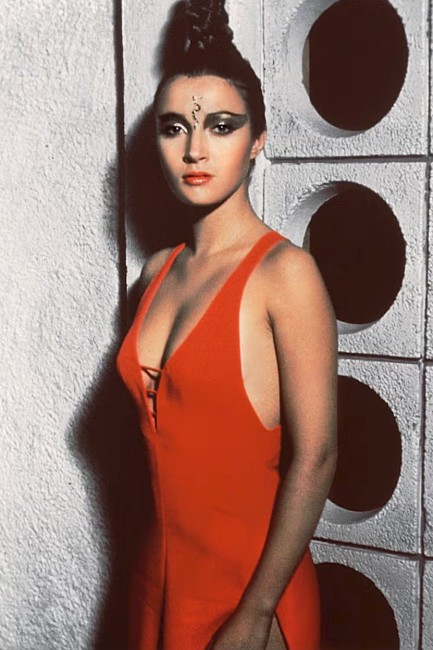
Playing the virgin tarot reader Solitaire in 1973's James Bond film Live and Let Die, British actress Jane Seymour wore probably a dozen hairstyles, but we don't remember this one. It's ridiculous, but when you're beautiful you can get away with it. Since shifting her career into top gear with Bond, she's racked up acting credits in something like 170 films and television shows. While she's appeared on the silver screen plenty, she truly made her mark in television, playing everything from an Old West physician in Dr. Quinn, Medicine Woman to Lady Brett Ashley in a mini-series of The Sun Also Rises. There's little doubt she's one of the more enduring small screen stars of her generation. We doubt even Solitaire saw that coming.
 The most inhospitable season just got worse. 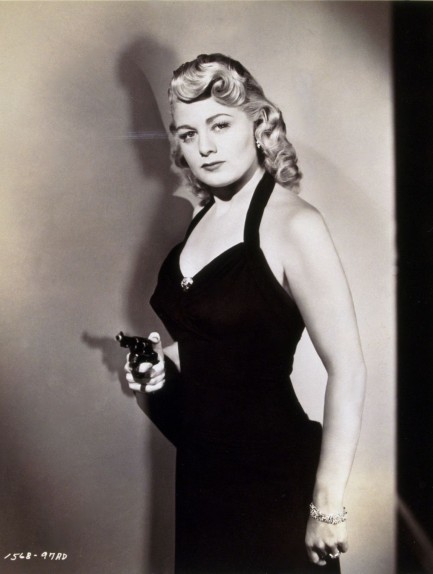
Shelley Winters, née Shirley Schrift, was one of the top actresses in Hollywood for five decades. Her notable films are many, and include A Place in the Sun, Night of the Hunter, Lolita, Alfie, The Poseidon Adventure, and even Cleopatra Jones. The above photo sees her in moll mode and was made for her 1948 crime drama Larceny. It's yet another film we haven't seen, but we'll get to it.
 I thought about it and decided that an amicable break-up was letting you off too easy. 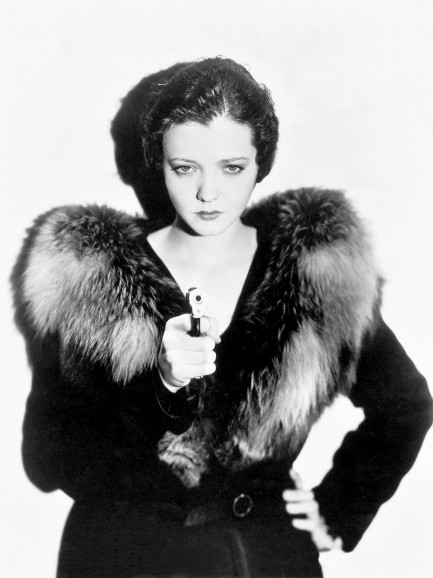
This striking promo image shows U.S. actress Sylvia Sidney and was made for her pre-Code gangster drama City Streets, in which she starred with Hollywood Legend Gary Cooper. The movie was based on a story idea by Dashiell Hammett. But back to Sidney, she was a legend too, who had an astonishingly long career that began with 1926's The Sorrows of Satan and ended well over a hundred screen and television credits later with thirteen guest spots on Fantasy Island in 1998 and 1999. In between she appeared in movies as diverse as 1988's Beetlejuice, 1932's Madame Butterfly, and 1945's Blood on the Sun. The above photo is from 1931.
 She had more facets and more talent than most. 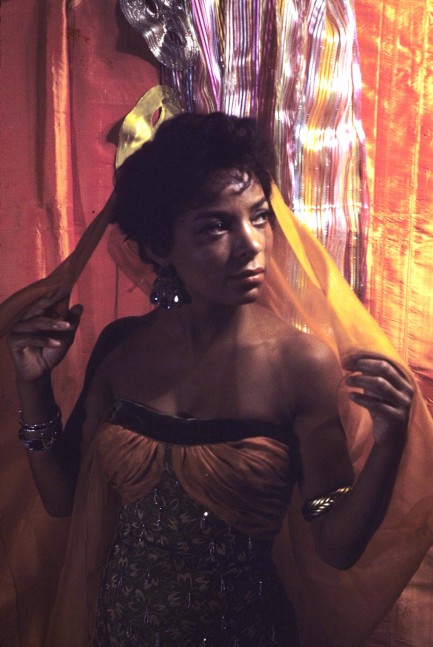
This photo shows U.S. actress, poet, screenwriter, playwright, journalist, and activist Ruby Dee. That's a lot of professions, but we're mainly concerned with her acting. In pursuit of that passion she appeared in such films as St. Louis Blues, Raisin in the Sun, and on television shows like The Fugitive and Peyton Place. This is a mighty nice image of one of Hollywood's most respected multi-hyphenates. It's from 1962.
 Ancient Zapotec treasures bring out the tomb raider in everyone. 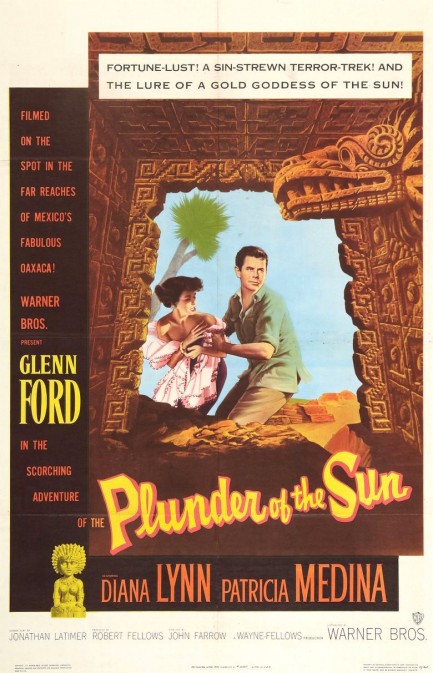
This poster was made for the 1953 adventure Plunder of the Sun, a title which may sound familiar from David Dodge's 1951 novel. The movie starred Glenn Ford, Patricia Medina, and Diana Lynn, and follows the basic gold hunting theme of the book, but with numerous plot details altered, and the exotic locations around Latin America—particularly Peru—condensed to only Havana and the province of Oaxaca, Mexico. The Havana scenes were shot in Mexico, but the Oaxaca scenes were indeed shot in southeastern Mexico, with location work at the Zapotec ruins in Monte Alban. You can practically hear the head honcho at Wayne-Fellows Productions saying, “I love this book, but we've got to make it cheaper. Why go all the way to Peru when there are perfectly good ruins in Mexico?” The Oaxaca locations are great, though, and extensively used, which really helps the film. Are we saying Plunder of the Sun is good? Well, no we aren't. It doesn't have the depth needed to earn a place in the top ranks of vintage cinema, but it's well shot, and its proto-Indiana Jones feel is interesting enough to keep you watching. We have a few promo images below, and you can learn more about the plot by checking our write-up on the novel here. 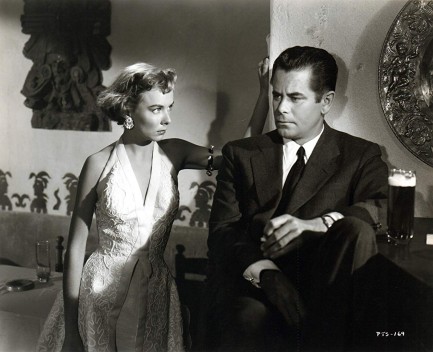 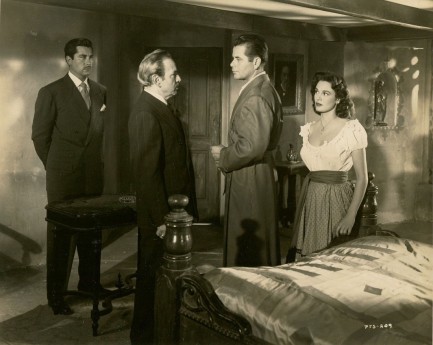 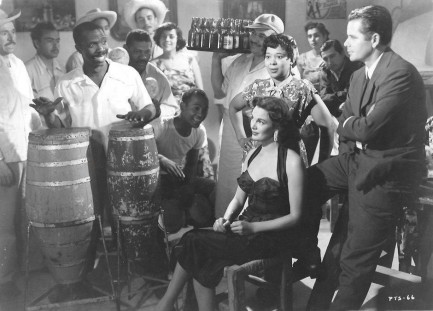 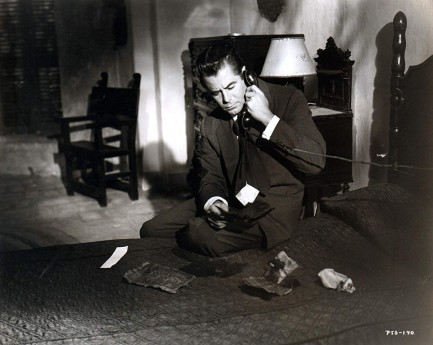 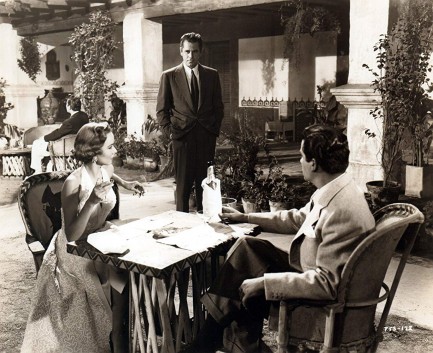 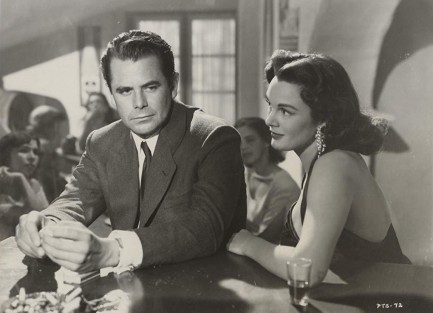  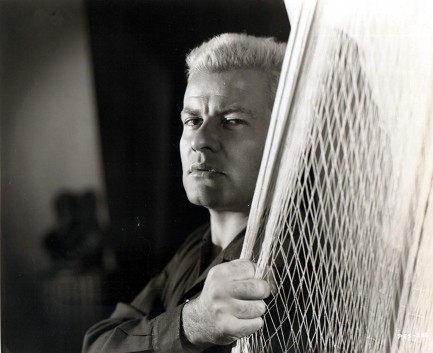 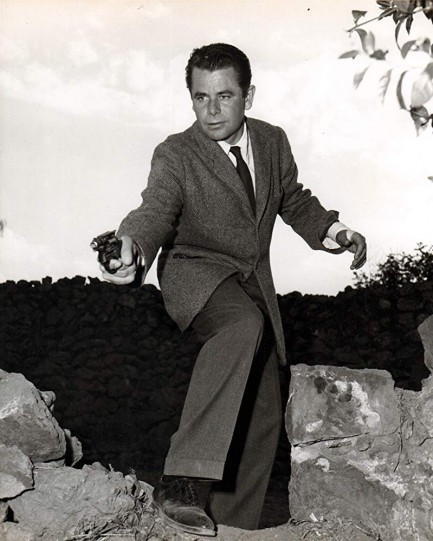 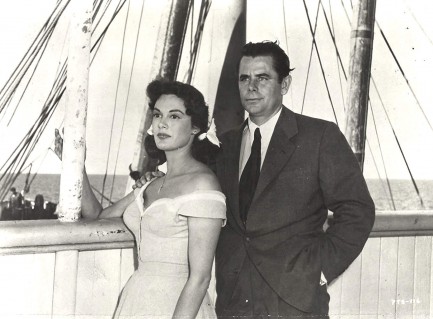 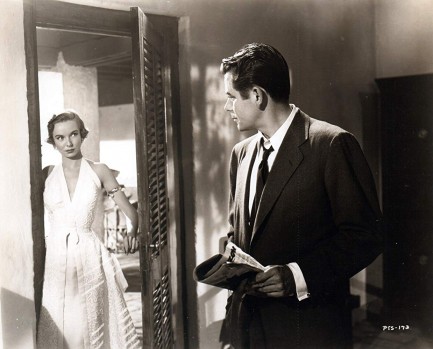 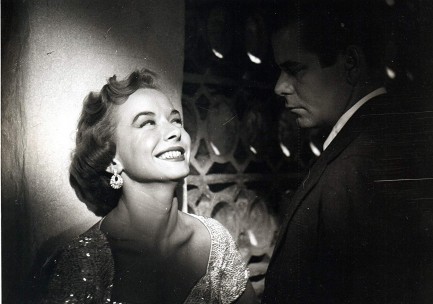 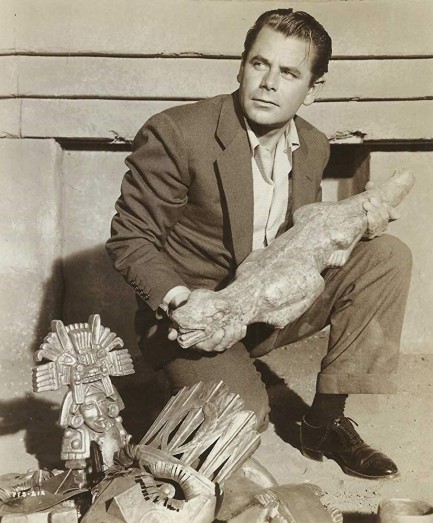
 Mari Atsumi goes searching for her place in the sun. 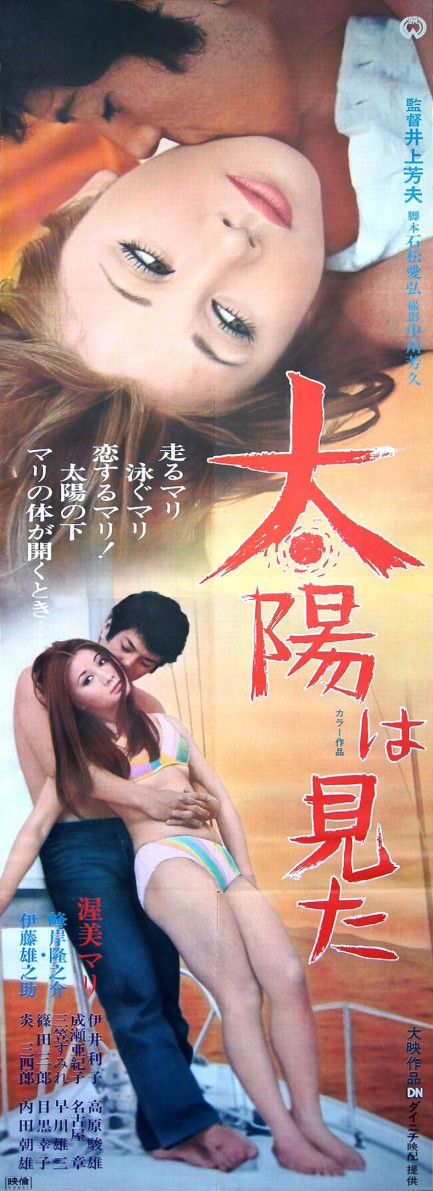 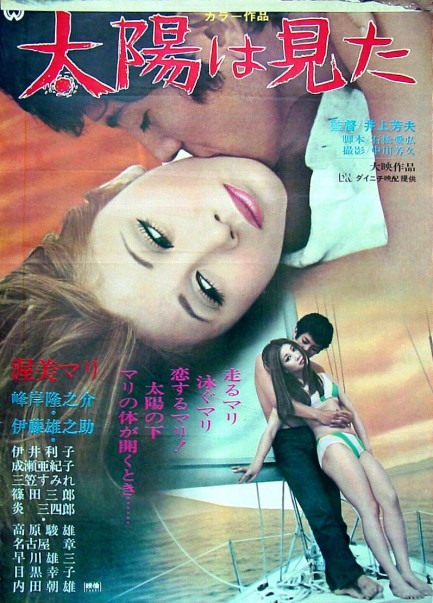
Above, two beautiful posters for Taiyo wa mita, aka I Saw the Sun, with Mari Atsumi. We couldn't track this one down but we know it's a drama set in a seaside town and know it premiered in Japan today in 1970. We already shared a really nice promo image for the film here, and if we learn more we'll report back.
 She was Japan's best sailing actress. 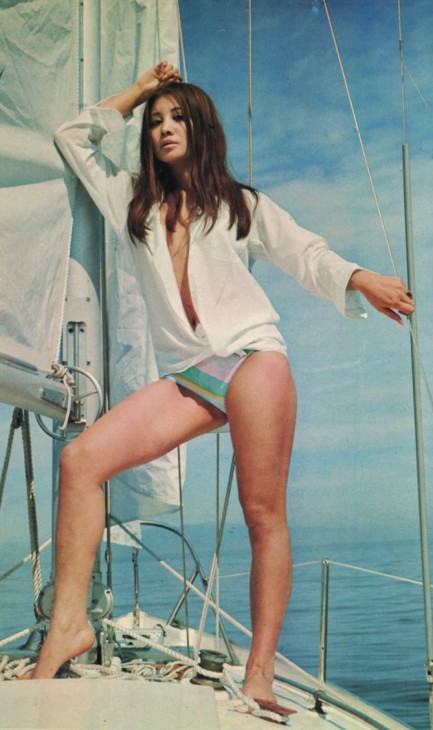
This fantastic sea-themed Daiei Film Co. promo image shows Japanese pinku actress Mari Atsumi, who by now probably needs no introduction. But in case she does, click here to see and read everything we've posted on her. The image comes from her 1970 film Taiyo wa mita, aka I Saw the Sun.
 This trip sucks! Next time let’s just pay extra for first class! 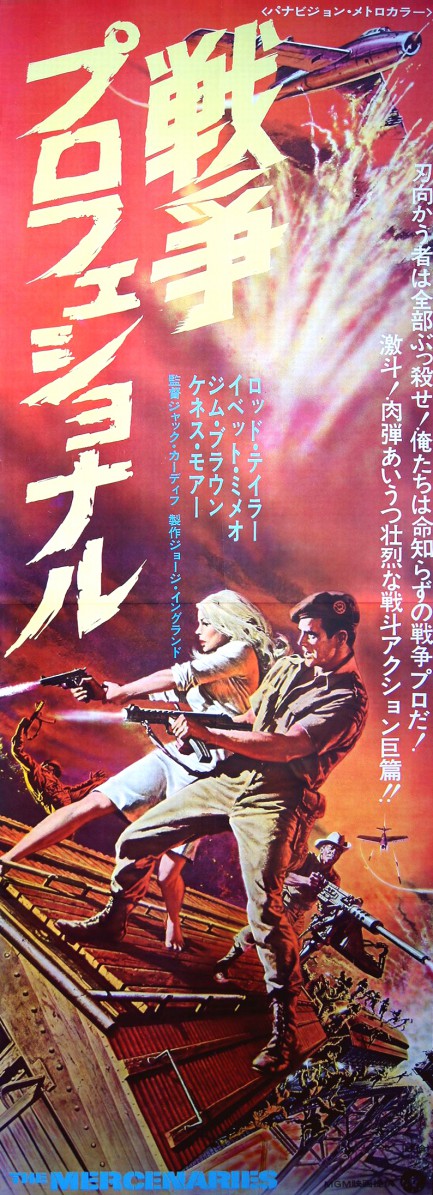
The Mercenaries, aka Dark of the Sun isn’t a movie many remember, but we’re going to remember it, because this is a great pre-CGI action film—not perfect, but well above average. Based on Wilbur Smith’s novel Train from Katanga, and starring Rod Taylor, Jim Brown, Peter Carsten, and Yvette Mimieux, it tells the story of two mercenaries in the civil war-torn Congo hired to ride a military train upcountry, rescue a group of stranded people, and retrieve $50 million in uncut diamonds languishing in a time-locked safe. They have to do it within three days, which means making rushed preparations—notably, enlisting the aid of a dodgy ex-Nazi who commands the Congolese mercs needed to round out the mission. This Nazi is a really bad human, so it’s no surprise he gets into a chainsaw fight with the protagonist shortly after they meet. You’d think the hero would expect the unexpected from the guy after that—but no. The Japanese poster above, while not perfectly descriptive of the action, gets the mood of The Mercenaries across effectively, and it opened in Japan today in 1968. 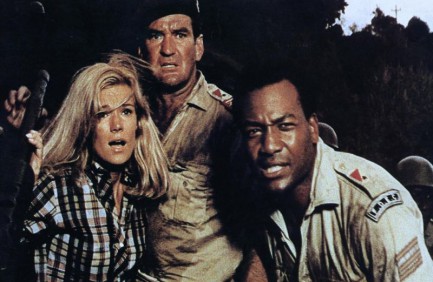 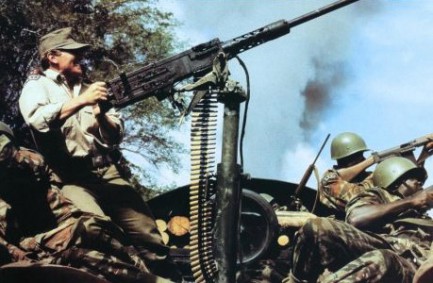 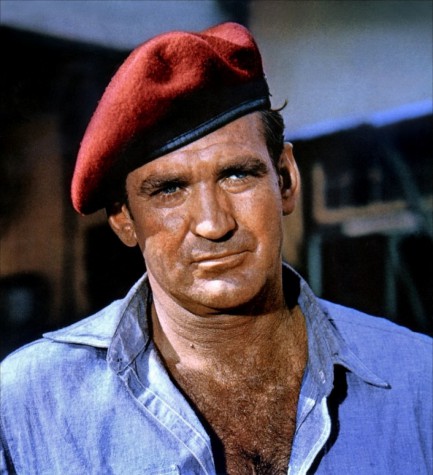 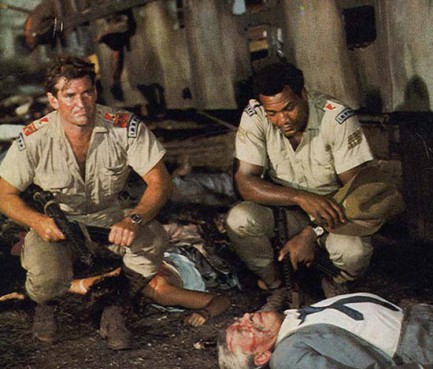 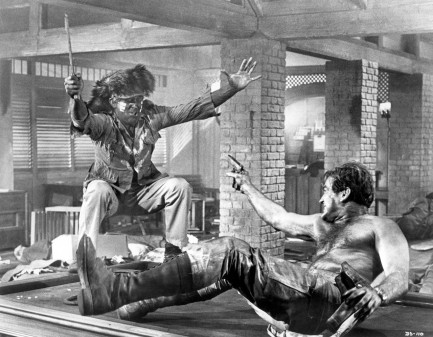 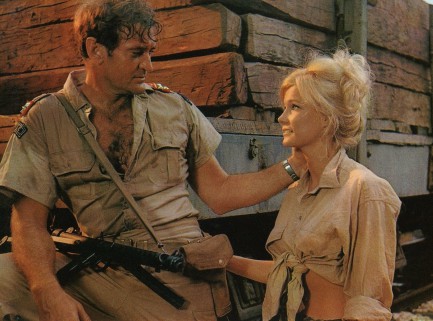
 London drug raid uncovers no drugs but raises serious questions. 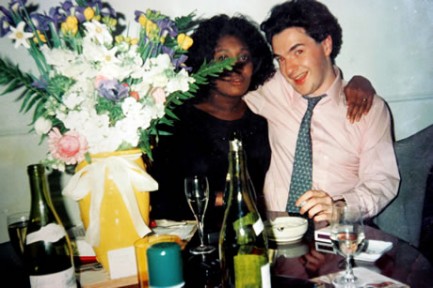
Over the weekend, a squad of drug cops raided the London flat of a woman named Natalie Rowe based on what they described as a “tip from a member of the public.” The drug cops found no drugs, no drug paraphernalia, no sign that drugs had ever been consumed in the apartment. Why is this such an interesting story? Because Rowe, formerly a prominent madam who procured women for paying male customers, is mere days from publishing an autobiography in which she details early 1990s sex and drug parties attended by various Tory politicians. She claims one of the politicians was current Chancellor of the Exchequer George Osborne. He appears in the photo above with Rowe, along with what she says is a line of cocaine (in full, fat view between the yellow vase and the wine glass). After the raid Rowe made an official complaint to police, saying she suspected she was targeted because of her forthcoming book. She was quoted in the tabloid The Sunday People: “I’m not into conspiracy theories. I’d like to think the fact I’ve been unfairly targeted by the police has nothing to do with the fact my book is about to be published, which happens to be very embarrassing for the Chancellor. But it’s certainly made me wonder.” Well, we’re into conspiracy theories and we’ll just come out and say that, especially in light of all the other dubious police activity in Great Britain these days, you’d have to be willfully blind to think the raid occurred for any other reason than at the behest of an influential government official. Think about it. Would a mere “tip from a member of the public” trigger an expensive full-scale drug raid, with no corroborating intelligence whatsoever, such as surveillance, reports from undercover police, or multiple complaints from neighbors? If so, any Brit with a personal enemy  now knows how to ruin that person's day. A single tip will bring a phalanx of police crashing through their door. Does your neighbor's dog bark late at night? Call the drug cops. Did some total ass get a promotion you wanted? Call the drug cops. So, let’s dismiss with this “tip from a member of the public” nonsense. Clearly, a full-scale drug raid that takes place with no corroborating intelligence doesn’t occur because of some random tip. It occurs because someone with great influence wants it to happen. now knows how to ruin that person's day. A single tip will bring a phalanx of police crashing through their door. Does your neighbor's dog bark late at night? Call the drug cops. Did some total ass get a promotion you wanted? Call the drug cops. So, let’s dismiss with this “tip from a member of the public” nonsense. Clearly, a full-scale drug raid that takes place with no corroborating intelligence doesn’t occur because of some random tip. It occurs because someone with great influence wants it to happen. Were we to speculate, we’d suggest that the cops were searching for anything that would justify serious charges against Rowe and cast doubt on whatever she has written. But it seems they failed to find any leverage. Do we actually care if George Osborne hoovered rails of coke in his youth? Not in the least. It puts him in the same company as many politicians, including Barack Obama, who wrote in his autobiography of how in his youth he did "a little blow.” But the raid, which looks to us like pure abuse of power, is certainly a troubling event in a country that many residents already believe is morphing into a police state. Is some plebe threatening your status and/or power? Call the drug cops. In any case, we’ve got our Kindle charged and ready for Rowe’s book.
 You know the saying there’s a thin line between love and hate? Duel in the Sun shows just how thin. 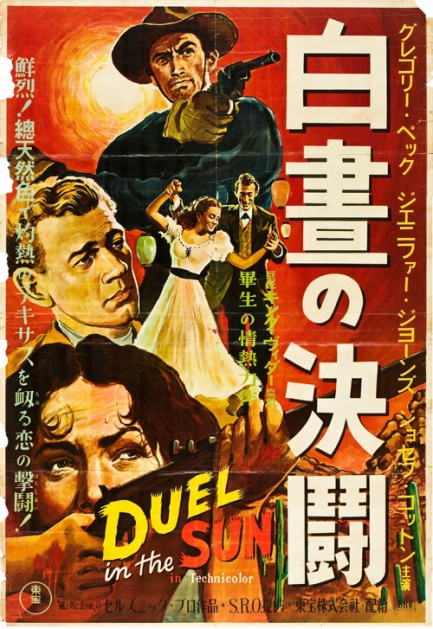
Duel in the Sun was a huge movie. We mean important stars, vibrant Technicolor, David O. Selznick in the producer’s chair, King Vidor directing the action, and a gigantic promotional budget. It’s a movie made by people absolutely sure they’re dealing with the hit of the year. Not because the movie is good. But because with so many important people involved it simply had to succeed. And like so many other movies of that stripe, its failures are manifold. We could talk about the overcooked score, the bombastic acting, the improbable script, and more, but there’s no point. Let’s just say a story about two people who love each other so much they end up shooting each other in the final scene is going to be hard to pull off under the best of circumstances. Spoiler alert, by the way. Or were we supposed to write that first? Well, in any case, the best of circumstances are not those provided by Duel in the Sun’s old West backdrop. Still, though, if a movie is big enough it can bludgeon people into acceptance, and Duel in the Sun today rates well on various review sites. But all of those reviewers are wrong. And the funny thing is they know it, too. They all say things like, “Preposterous but worth the ticket price because it’s beautifully shot.” One critic calls it “fragmented and ultimately destroyed by its obsessive producer,” yet goes on to give it a positive recommendation. You see what we mean? Even professional critics sometimes suffer from cognitive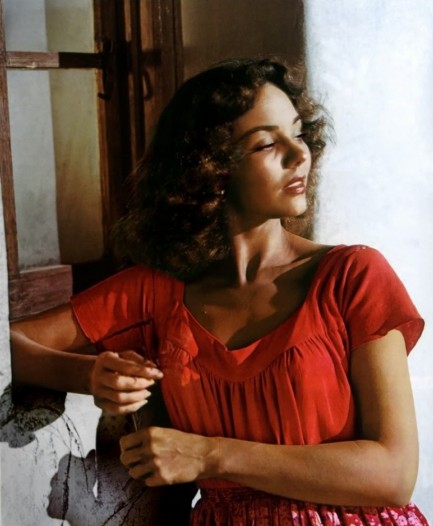  dissonance. A movie that is destroyed by its producer is not good—period—and movie going shouldn’t be a mercy fuck. dissonance. A movie that is destroyed by its producer is not good—period—and movie going shouldn’t be a mercy fuck. On the plus side, Gregory Peck is always fun to watch and Jennifer Jones as the dusky Pearl Chavez cannot fail to stir something inside you, but the whole proposition is just silly. Really. If you want to see a big studio flick implode spectacularly, this may be the one. And if you want to know how studios began to understand that they didn’t need to make good movies to make money, this is a prime example, because in adjusted currency it remains one of the most successful productions of all time. But at least the promo poster is a total winner. It was made for the movie’s Japanese premiere, which was today in 1951.

|
 |

The headlines that mattered yesteryear.
1923—Yankee Stadium Opens
In New York City, Yankee Stadium, home of Major League Baseball's New York Yankees, opens with the Yankees beating their eternal rivals the Boston Red Sox 4 to 1. The stadium, which is nicknamed The House that Ruth Built, sees the Yankees become the most successful franchise in baseball history. It is eventually replaced by a new Yankee Stadium and closes in September 2008. 1961—Bay of Pigs Invasion Is Launched
A group of CIA financed and trained Cuban refugees lands at the Bay of Pigs in southern Cuba with the aim of ousting Fidel Castro. However, the invasion fails badly and the result is embarrassment for U.S. president John F. Kennedy and a major boost in popularity for Fidel Castro, and also has the effect of pushing him toward the Soviet Union for protection. 1943—First LSD Trip Takes Place
Swiss scientist Albert Hofmann, while working at Sandoz Laboratories in Basel, accidentally absorbs lysergic acid diethylamide, better known as LSD, and thus discovers its psychedelic properties. He had first synthesized the substance five years earlier but hadn't been aware of its effects. He goes on to write scores of articles and books about his creation.
|

|
|

It's easy. We have an uploader that makes it a snap. Use it to submit your art, text, header, and subhead. Your post can be funny, serious, or anything in between, as long as it's vintage pulp. You'll get a byline and experience the fleeting pride of free authorship. We'll edit your post for typos, but the rest is up to you. Click here to give us your best shot.

|
|







































 now knows how to ruin that person's day. A single tip will bring a phalanx of police crashing through their door. Does your neighbor's dog bark late at night? Call the drug cops. Did some total ass get a promotion you wanted? Call the drug cops. So, let’s dismiss with this “tip from a member of the public” nonsense. Clearly, a full-scale drug raid that takes place with no corroborating intelligence doesn’t occur because of some random tip. It occurs because someone with great influence wants it to happen.
now knows how to ruin that person's day. A single tip will bring a phalanx of police crashing through their door. Does your neighbor's dog bark late at night? Call the drug cops. Did some total ass get a promotion you wanted? Call the drug cops. So, let’s dismiss with this “tip from a member of the public” nonsense. Clearly, a full-scale drug raid that takes place with no corroborating intelligence doesn’t occur because of some random tip. It occurs because someone with great influence wants it to happen.


 dissonance. A movie that is destroyed by its producer is not good—period—and movie going shouldn’t be a mercy fuck.
dissonance. A movie that is destroyed by its producer is not good—period—and movie going shouldn’t be a mercy fuck.




































































